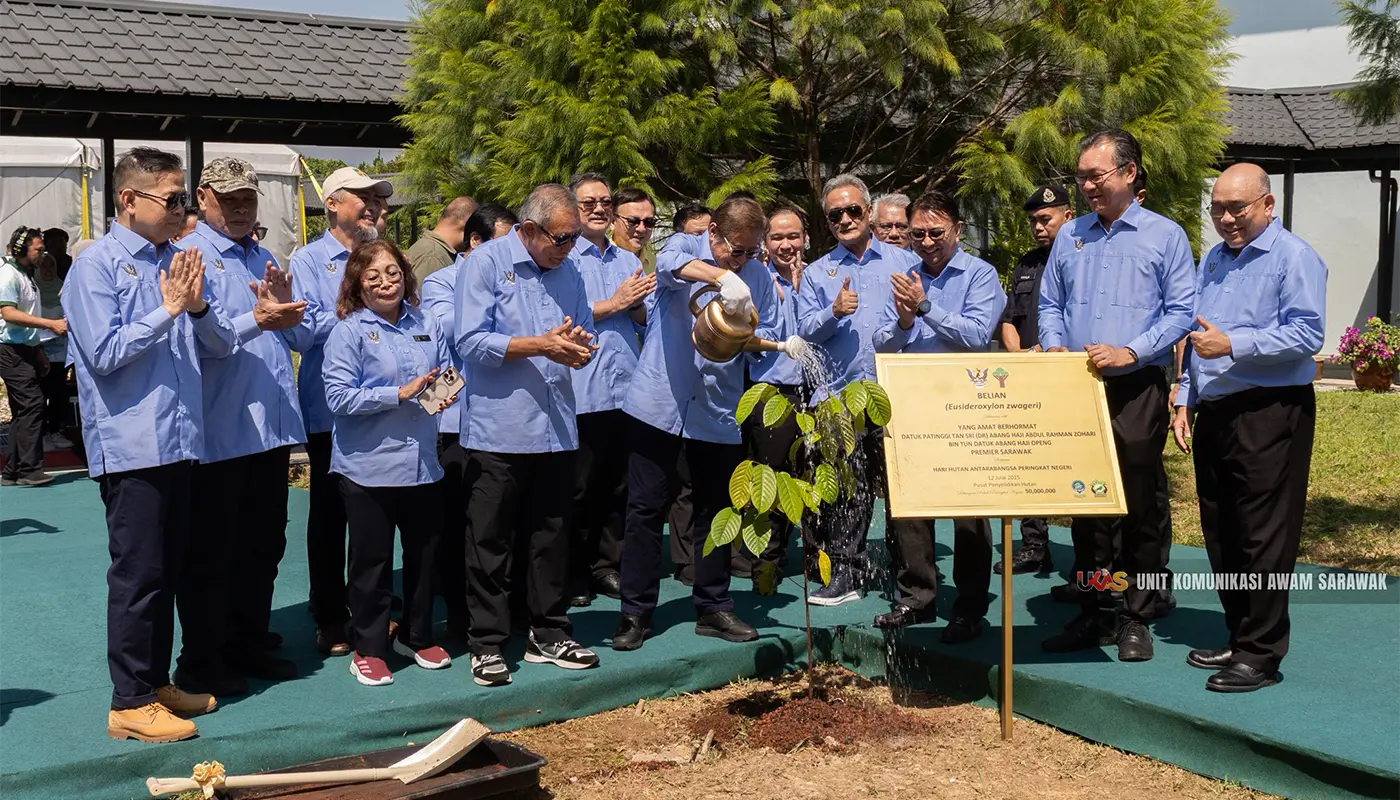KUCHING — Sarawak will deploy cutting-edge 3D forest mapping technology to revolutionize carbon trading and strengthen its position as a global sustainability leader, Premier Datuk Patinggi Tan Sri Abang Johari Openg announced at Saturday’s International Day of Forests celebration.
The initiative leverages advanced visualization systems to quantify species-specific carbon absorption capacities across Sarawak’s 7.5 million hectares of tropical forests.
“Conventional carbon assessments overlook critical biodiversity variables,” stated Abang Johari at the Forest Research Centre, referencing live 3D demonstrations. “This technology identifies individual tree species and their unique sequestration capabilities – from towering dipterocarps to ironwood – enabling precise calculation of our forests’ true carbon value.”
The Premier emphasized that carbon credit pricing directly correlates with these verified absorption metrics, positioning Sarawak to implement equitable carbon levies or taxes.
The 3D ecosystem mapping addresses two strategic priorities:
- Carbon Economy Optimization: Accurate valuation of credits in global markets
- Conservation Science: Real-time monitoring of endangered species habitats
- Policy Innovation: Data-driven carbon taxation frameworks
Abang Johari positioned Sarawak alongside Brazil and Latin American nations as custodians of the world’s remaining tropical rainforests: “Like Borneo, these regions must adopt technology to transform forests from passive resources into actively managed climate assets.”
The Forest Department will integrate satellite LiDAR, drone photogrammetry, and AI analysis to create dynamic digital twins of priority conservation zones by 2026.
This technological leap supports Sarawak’s circular economy transition, where forests generate sustainable revenue through verified carbon credits while preserving biodiversity.
Initial implementation will cover the Upper Baram Forest Area and Maludam National Park, representing 1.2 million hectares of high-carbon-density ecosystems. Environmental economists project the system could increase Sarawak’s annual carbon revenue by 35% while reducing verification costs.






